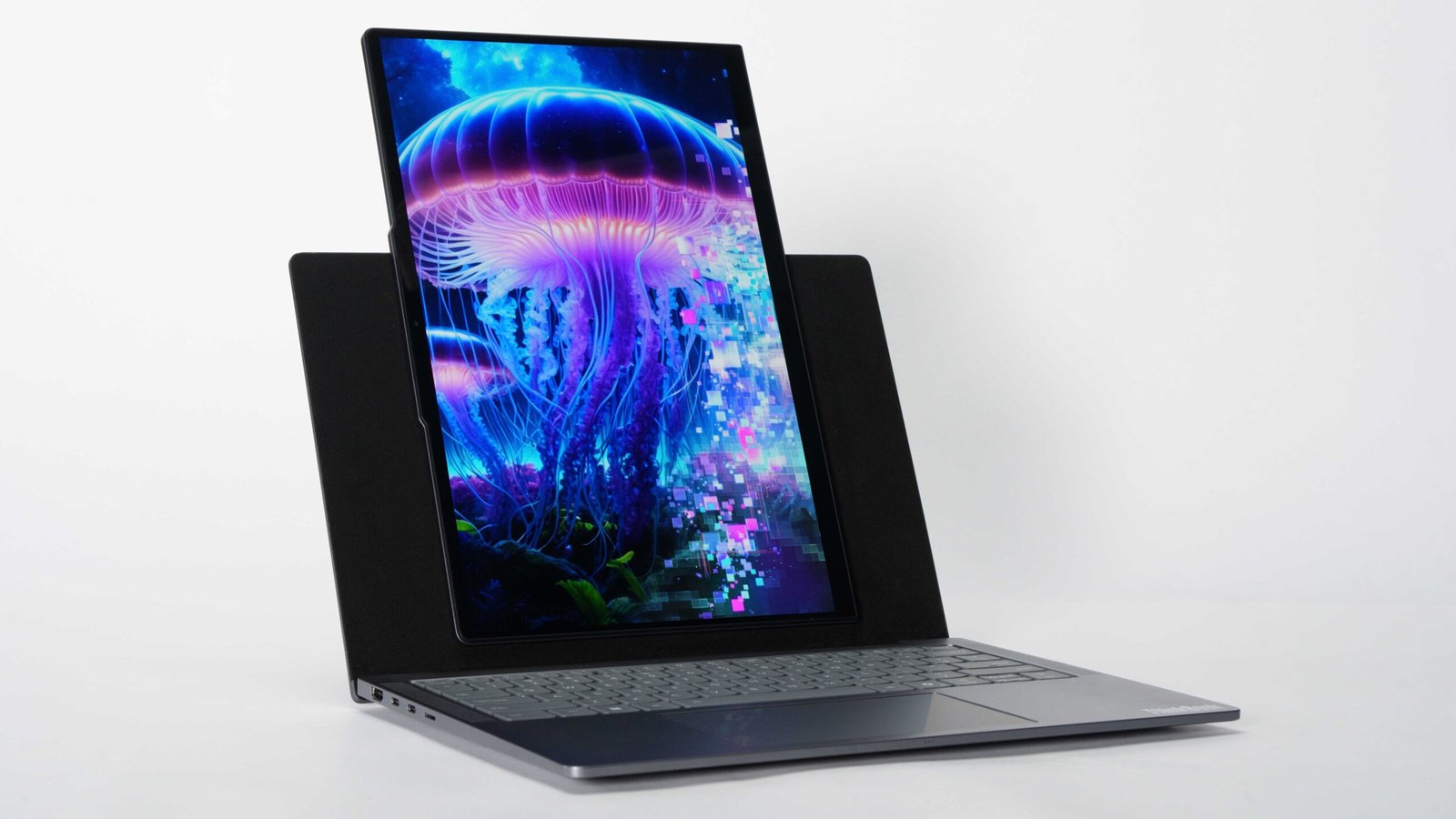At the upcoming IFA 2025 trade show, Lenovo is set to showcase its latest innovation in laptop design: Project Pivo, a concept laptop featuring a rotating display that promises to redefine user flexibility and ergonomic functionality. This prototype marks a significant shift from Lenovo’s earlier experiments with rollable screens, offering a more practical yet innovative approach to adaptable display technology.
Project Pivo introduces a 16:9 display panel that physically pivots between landscape and portrait orientations, a feature inspired by pivot monitors commonly used in professional settings. Unlike Lenovo’s previous rollable-screen ThinkBook Plus Gen 6, which utilized flexible OLED technology to extend vertically, Project Pivo opts for a traditional panel that rotates to optimize screen real estate for different tasks. This design choice simplifies the mechanics while maintaining versatility, making it a compelling option for both productivity and entertainment.
In portrait mode, the laptop offers increased vertical height, ideal for tasks like coding, reading lengthy documents, or editing vertical designs such as mobile app interfaces. This orientation can enhance posture and reduce neck strain during extended work sessions, addressing ergonomic concerns for professionals. When switched to landscape, the display reverts to the familiar 16:9 format, perfect for watching movies, gaming, or multitasking with widescreen applications, ensuring compatibility with most media without black bars.
Leaked details, courtesy of industry insider Evan Blass (@evleaks), suggest that Project Pivo is Lenovo’s attempt to balance cutting-edge innovation with practical usability. By moving away from the complexities of rollable OLED displays, Lenovo focuses on a robust hinge mechanism that allows seamless transitions between orientations. This approach not only reduces potential durability issues associated with flexible screens but also makes the concept more feasible for eventual mass production.
The rotating display is expected to cater to a wide range of users, from coders and designers who benefit from vertical screen space to casual users who appreciate the flexibility for media consumption. Lenovo’s decision to showcase Project Pivo at IFA 2025 indicates the company’s intent to gauge consumer interest, a strategy it successfully employed with the ThinkPad X1 Fold, which evolved from a concept to a market-ready product.
Source : Evan Blass


It’s frustrating how something so simple could make Lenovo detachables much more useful. If they just added a magnetic docking connector on the shorter side as well, the device could be used in portrait (pivot) mode with the keyboard attached. Perfect for note-taking, coding, or reading documents — and it wouldn’t even require expensive redesigns. Instead, this small omission ends up making the whole device feel unnecessarily limited and overpriced.
Lenovo (or other manufacturers’) 2-in-1 / tablet-laptop hybrids usually connect to the keyboard only in landscape mode.
If they added a magnetic/docking connector on the shorter side as well, the same device could be used in portrait (pivot) mode too — for example for note-taking, working with documents, coding, or projects.
This wouldn’t require expensive new mechanics or electronics, “just” an additional connection point and software support.
In essence, because of a cheap design choice, users are now forced to buy more expensive solutions (such as separate stands, a tablet + keyboard, or an entirely different laptop category), even though such a small addition could radically improve usability.
👉 This makes a good note/project idea, because:
It highlights how manufacturers often “artificially” limit device functionality.
Even a tiny engineering adjustment can create huge value for users.
It shows that not every innovation requires a large budget — sometimes it only takes situational thinking.